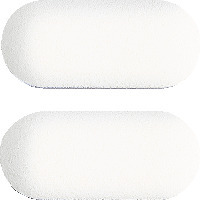What is in this leaflet
This leaflet answers some common questions about this medicine.
It does not contain all the available information. It does not take the place of talking to your doctor or pharmacist.
All medicines have risks and benefits. Your doctor has weighed the risks of you being given TRAMADOL AN SR against the benefits it is expected to have for you.
If you have any concerns about being given this medicine, ask your doctor or pharmacist.
Keep this leaflet. You may need to read it again.
What TRAMADOL AN SR is used for
TRAMADOL AN SR is used to relieve moderate to severe pain. It belongs to the group of medicines called analgesics (pain relievers). TRAMADOL AN SR tablets are designed to release the active ingredient for pain relief gradually over several hours.
Before you use TRAMADOL AN SR for the first time
Tell your doctor if:
- you are allergic to any of the ingredients in TRAMADOL AN SR (see "Product Description”)
- you are known to be sensitive to opioids
- you have lung or breathing problems
- you are taking any medicines for depression, or mental or psychiatric disorder or to help you sleep
- you are taking medication known as selective serotonin reuptake inhibitors (SSRI's), tricyclic anti-depressants, quinidine, phenothiazines or anti psychotics
- you have had any fits or convulsions, or take medicines for epilepsy
- you are taking the medicine carbamazepine (one Brand name is Tegretol)
- you have any disorder of the kidney, liver or pancreas, including any related to alcohol intake - for example, cirrhosis of the liver
- you have a stomach problem
- you have a severe headache or have had a head injury
- you have, or have had, any drug or alcohol dependence
- you are taking any other medicine, including those you buy from a pharmacy or supermarket
Use in children
TRAMADOL AN SR is not recommended for children under 12 years.
Use in the elderly
Patients over 75 years may need a reduced daily dose of TRAMADOL AN SR compared to younger adults.
If you are pregnant or intend to become pregnant:
TRAMADOL AN SR is not recommended for use during pregnancy. Talk to your doctor about the risks and benefits of using TRAMADOL AN SR during pregnancy.
If you are breast-feeding or plan to breast feed:
TRAMADOL AN SR is not recommended for use during breast-feeding. Talk to your doctor about the risks and benefits using TRAMADOL AN SR when breast-feeding.
If you are driving or operating machinery
TRAMADOL AN SR may make you drowsy or dizzy. Ask your doctor or pharmacist for advice about whether it is safe for you to drive or operate machinery while taking TRAMADOL AN SR.
Taking other medicines
Tell your doctor if you are taking any other medicines, including medicines that you buy without a prescription from your pharmacy, supermarket or health food shop. Some medicines may interfere with TRAMADOL AN SR. These include:
- carbamazepine (eg. Tegretol)
- coumarin derivatives (eg. Warfarin: some Brand names are Coumadin or Marevan)
- ondansetron
- medicine for irregular or rapid heart beat
- medicines for depression, sleeplessness or mental conditions such as selective serotonin reuptake inhibitors (SSRI's), tricyclic anti-depressants, quinidine, phenothiazines or anti-psychotics
- some antibiotics.
These medicines may be affected by TRAMADOL AN SR, or may affect how well it works. You may need different amounts of your medicine, or you may need to take different medicines. Other interactions not listed above may also occur.
Your doctor or pharmacist has more information on medicines to be careful with or avoid while taking TRAMADOL AN SR
How Tramadol AN should not be used
You should NOT use TRAMADOL AN SR if:
- you have an allergy to any of the ingredients (see “Product Description” for details)
- you have an allergy to any other medicines known as opioid analgesics, eg. morphine or codeine.
- you have taken large amounts of alcohol or other substances which can affect your level of consciousness
- you are taking medicine for depression containing a "monoamine oxidase inhibitor" also known as MAOI, or have taken any within the past two weeks. Examples of MAOI-containing medicines are Nardil, Parnate.
- you are having treatment for withdrawal from narcotics
- the packaging is torn or shows signs of tampering
- any tablets look damaged or discoloured
- it is after the expiry date which is printed on the carton.
How Tramadol AN is used
TRAMADOL AN SR tablets should be swallowed whole with water. They may be taken before, with, or after food.
They must NOT be chewed, crushed or dissolved. This will release all active ingredient for pain relief quite quickly. Side effects may then occur.
The recommended dosage of TRAMADOL AN SR is either:
- one or two TRAMADOL AN SR 100 mg tablet(s) twice a day (morning and evening)
OR - one TRAMADOL AN SR 150 mg or 200 mg tablet twice a day (morning and evening).
Do not take more than four of the 100 mg tablets per day.
Do not take more than two of the 150 mg or of the 200 mg tablets per day.
What to do if you have missed your dose
If you forget to take one dose, take the dose when you remember. The following dose should be taken after twelve hours, or as prescribed by your doctor.
How long you should take TRAMADOL AN SR
This varied from individual to individual. It depends, for example, on how severe your pain is, how you respond to TRAMADOL AN SR, and the cause of your pain. Ask your doctor for advice on how long you need to take TRAMADOL AN SR tablets.
As with all medicines:
- take only as your doctor has told you.
- if you feel that you do not need as much TRAMADOL AN SR as your doctor has prescribed for you, talk to your doctor.
- tell your doctor if your pain is not helped or gets worse. Do not take increased amounts or extra doses of TRAMADOL AN SR unless your doctor advises you to.
Side effects of TRAMADOL AN SR
All medicines can cause unwanted effects, and some side effects have been reported with TRAMADOL AN SR. Side effects reported with TRAMADOL AN SR are usually minor and temporary, but some may be serious.
The most common side-effects of TRAMADOL AN SR are:
- dizziness
- sedation, fatigue
- headache
- constipation
- nausea, vomiting
- sweating
- dry mouth.
The following side-effects are less common:
- indigestion
- changes in appetite
- skin reactions
- sudden onset of low blood pressure, collapse
- muscle weakness
- tremor
- seizures
- respiratory depression
- improvement of mood
- confusion
- sleep disturbance
- blurred vision
- difficulty in passing urine
- Serotonin Syndrome: signs of this vary and are not specific. They may include fever, sweating, confusion, agitation, diarrhoea, muscle twitching, difficulty with walking and balance. Serotonin Syndrome may result from interaction of tramadol with other medicines which increase serotonin effects, for example, the SSRI antidepressants.
This is not a complete listing. Occasionally, other side effects may be experienced.
Tell your doctor immediately if you experience any of the following side effects, as urgent medical treatment may be required:
- skin rash (red spots or patches), itching hives, skin lumps
- swelling or puffiness of the eyelids, face or lips
- chest tightness, wheezing or pain in the chest
- heart palpitations, faintness or collapse
- hallucinations
- convulsions
If you experience any side-effects that have not been mentioned here, consult your doctor or pharmacist as soon as possible.
You should remember that all medicines carry some risks. It is possible that some risks might not yet have been detected despite many years of experience with the medicine.
Is TRAMADOL AN SR addictive
When used as prescribed by your doctor, addiction to TRAMADOL AN SR is very unlikely.
If you are taking TRAMADOL AN SR for a prolonged period of time, your body may become used to the medicine and mild withdrawal symptoms may occur if you suddenly stop taking the medicine.
It is important therefore to take TRAMADOL AN SR only as directed by your doctor.
What to do in the case of overdosage
In the event of overdose, you should contact your nearest Poisons Information Centre (phone: 131 126), doctor or hospital emergency department immediately.
Overdosage with TRAMADOL AN SR will result in a decrease in breathing and fits or convulsions.
Storing TRAMADOL AN SR
- Keep TRAMADOL AN SR in a safe place, where children cannot reach it.
- Store in a cool, dry place, below 25ºC.
- Keep away from direct sunlight.
- Do not use TRAMADOL AN SR after the use-by-date printed on the carton.
Product description
What it looks like
- TRAMADOL AN SR 100 mg - off-white, round biconvex tablet
- TRAMADOL AN SR 150 mg - off-white, capsule shaped tablet
- TRAMADOL AN SR 200 mg - off-white, capsule shaped tablet
All tablets are contained in a blister pack within a carton.
Ingredients
Active ingredient:
- Tramadol hydrochloride
Inactive ingredients:
- Calcium hydrogen phosphate
- Hydroxypropylcellulose
- Silica - colloidal anhydrous
- Magnesium stearate
Manufacturer
Sponsor
Southern Cross Pharma Pty Ltd
56 Illabunda Drive
Malua Bay
NSW 2536
Date of Information:
May 2014
AUST R Number
TRAMADOL AN SR 100 mg: AUST R 190051
TRAMADOL AN SR 150 mg: AUST R 190052
TRAMADOL AN SR 200 mg: AUST R 190053





